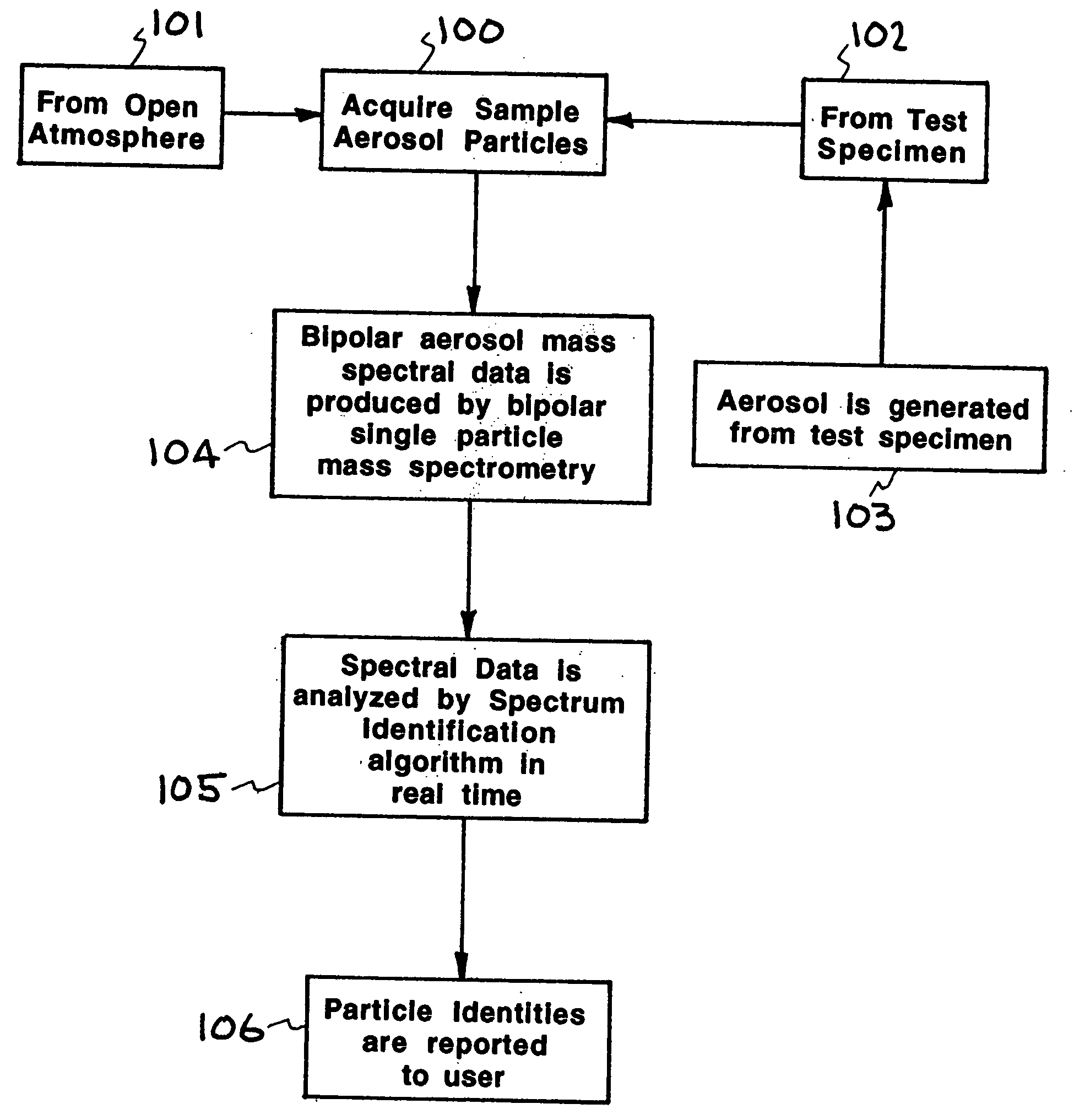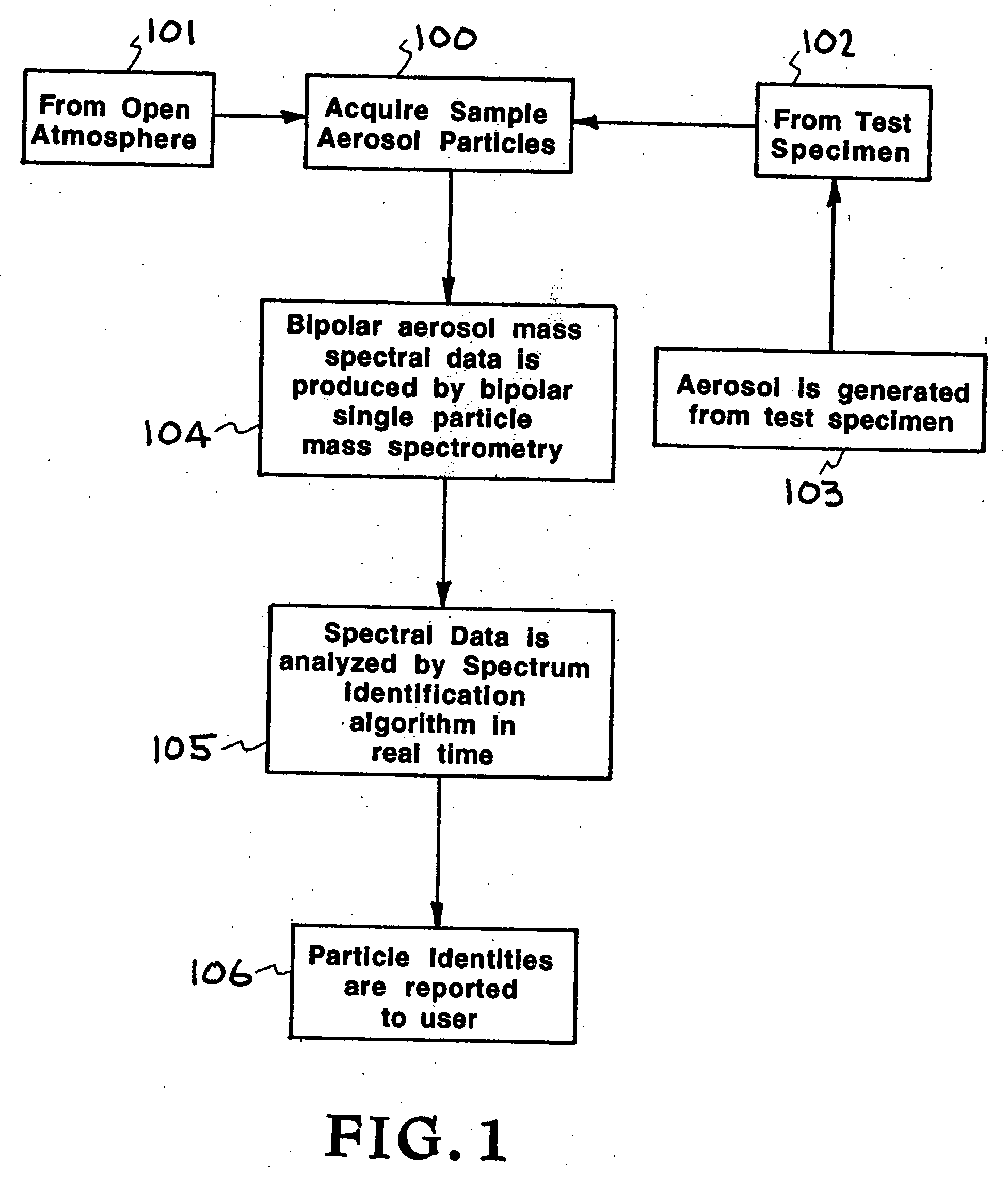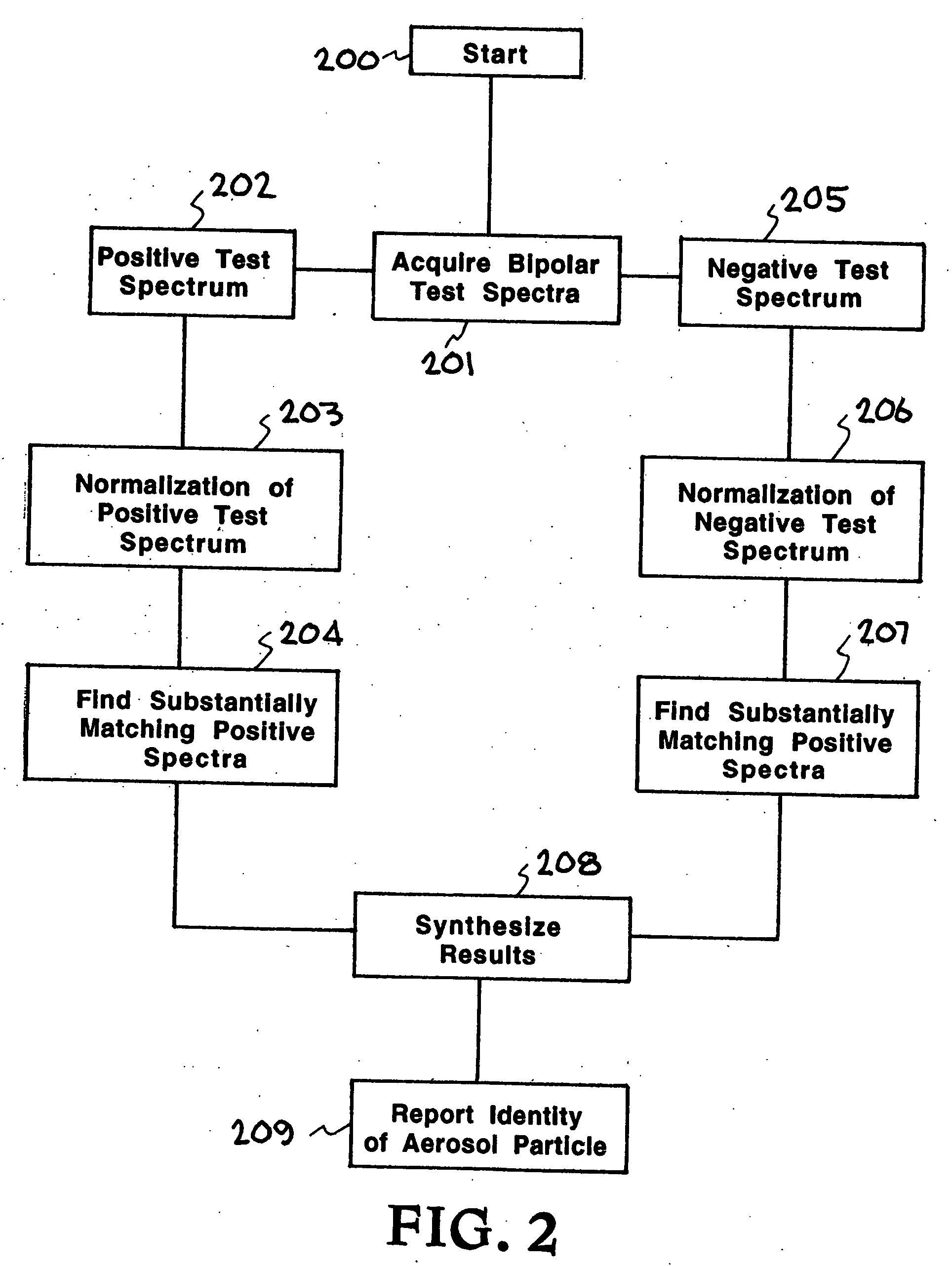Real-time detection method and system for identifying individual aerosol particles
a real-time detection and aerosol technology, applied in the field of particle detection systems and methods of analysis, can solve the problems of inherently difficult detection of biological and chemical weapons attacks, unreliability of real-time particle source analysis and identification, and the cost of long analysis tim
- Summary
- Abstract
- Description
- Claims
- Application Information
AI Technical Summary
Benefits of technology
Problems solved by technology
Method used
Image
Examples
Embodiment Construction
[0046] The present invention is a general aerosol rapid detection (GARD) system and method which interrogates individual aerosol particles in an effort to characterize a sample that might be of interest either scientifically, medically, commercially, or as an indication of a terrorist threat, or in the interest of law enforcement. In particular, the system and method of the present invention serves to achieve more than a simple determination of a particle's chemical composition or further grouping into similar clusters. Instead, the system operates to analyze and positively identify an individual aerosol particle (not in aggregate) of unknown origin from a database of known particle types, with each known particle type associated with both a positive spectrum profile and a negative spectrum profile. Furthermore, the analysis and identification is achieved online and in real time, with the identification results rapidly communicated to a user in a virtually instantaneous manner.
[004...
PUM
| Property | Measurement | Unit |
|---|---|---|
| mass | aaaaa | aaaaa |
| diameter | aaaaa | aaaaa |
| diameter | aaaaa | aaaaa |
Abstract
Description
Claims
Application Information
 Login to View More
Login to View More - R&D
- Intellectual Property
- Life Sciences
- Materials
- Tech Scout
- Unparalleled Data Quality
- Higher Quality Content
- 60% Fewer Hallucinations
Browse by: Latest US Patents, China's latest patents, Technical Efficacy Thesaurus, Application Domain, Technology Topic, Popular Technical Reports.
© 2025 PatSnap. All rights reserved.Legal|Privacy policy|Modern Slavery Act Transparency Statement|Sitemap|About US| Contact US: help@patsnap.com



